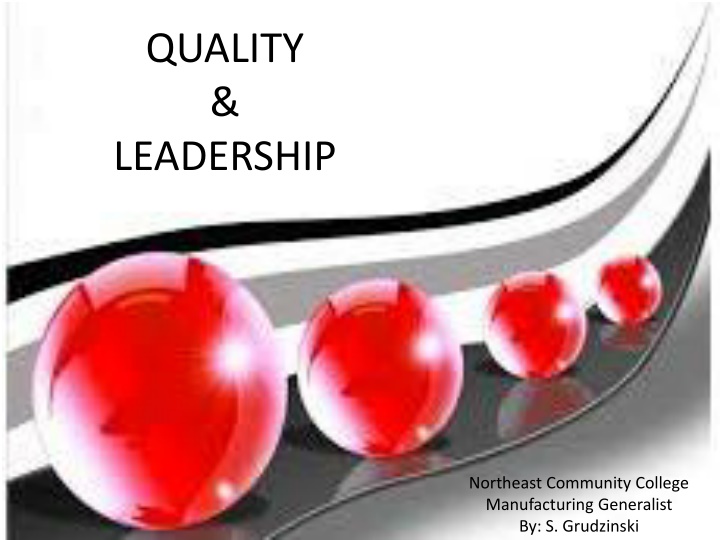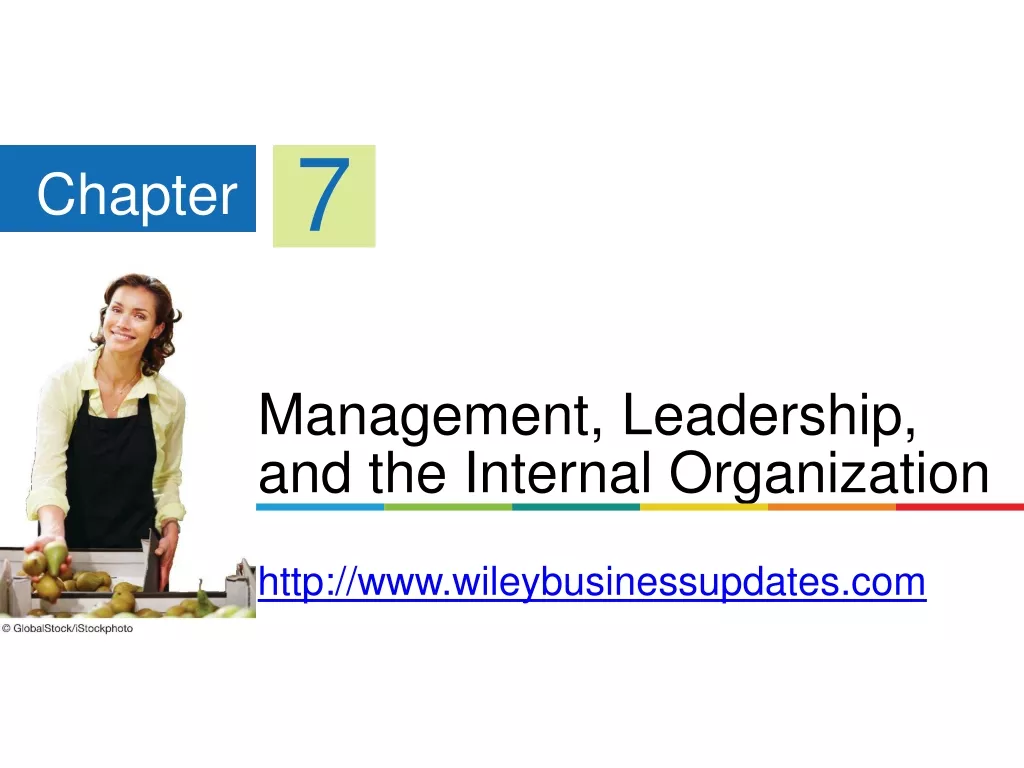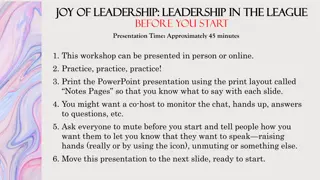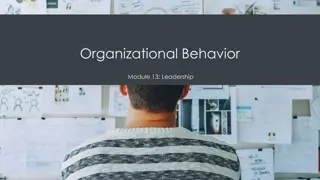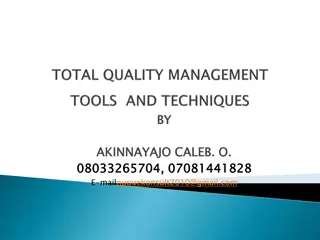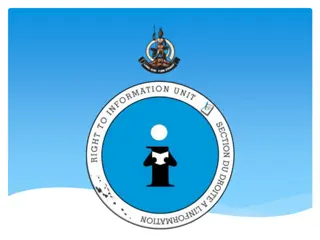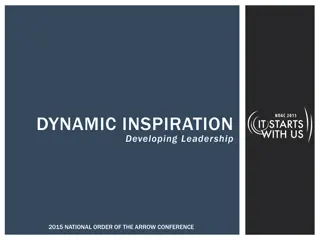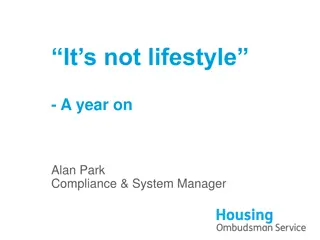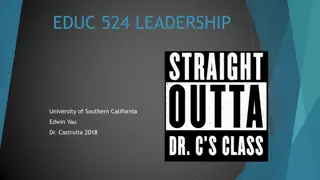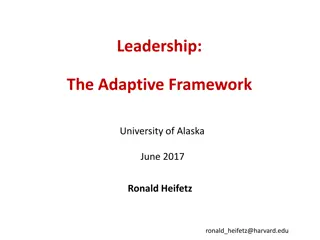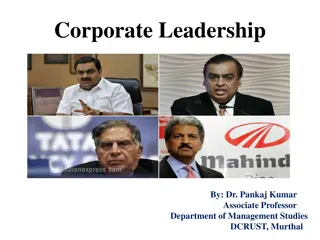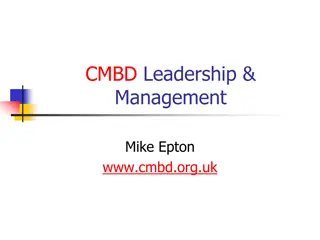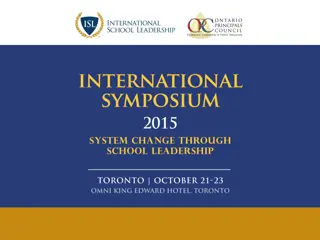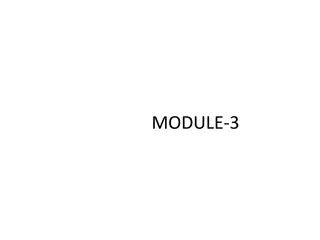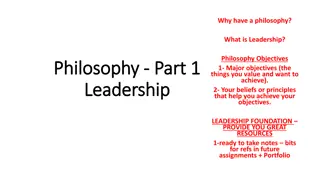Proactive Leadership and Quality Management Insights
Gain valuable insights into proactive leadership and quality management through visual representations and thought-provoking messages. Explore the concepts of being proactive, personal responsibility, and the power of choice in shaping your path to success. Learn to differentiate between reactive and proactive approaches to achieve your goals effectively.
Download Presentation

Please find below an Image/Link to download the presentation.
The content on the website is provided AS IS for your information and personal use only. It may not be sold, licensed, or shared on other websites without obtaining consent from the author.If you encounter any issues during the download, it is possible that the publisher has removed the file from their server.
You are allowed to download the files provided on this website for personal or commercial use, subject to the condition that they are used lawfully. All files are the property of their respective owners.
The content on the website is provided AS IS for your information and personal use only. It may not be sold, licensed, or shared on other websites without obtaining consent from the author.
E N D
Presentation Transcript
QUALITY & LEADERSHIP Northeast Community College Manufacturing Generalist By: S. Grudzinski
A Bad Day At The Office Some days, the best thing about my job is that the chair spins. Link to video
Life Doesnt Just Happen It is the result of your choices and decisions Success SADNESS
Being Proactive What Does It Mean To BE PROACTIVE
Being Proactive Personal Responsibility Remember: Everything you do has an effect on other people. Sometimes that matters. It is up to you to decide whether it matters enough. Image from sodahead.com
Everything YOU do is based on the CHOICE YOU make. It s not your parents, your past, your relationships, your job, your boss, your teachers, your friends, the economy, an argument, where you live, or your age that is to blame. YOU and only YOU are RESPONSIBLE for every decision and every choice that YOU make.
Being Reactive Affected by surroundings. # Tests Thanks for joining me next semester Blame others and external sources Reactive Good Let the situation get to them Proactive Image from sodahead.com
Proactive vs. Reactive Reactive Proactive Use profanity, derogatory Uses proactive language Unprofessional Professionalism I can t, I have to, if only I can, I will, I prefer Focuses on things they cannot control Focuses on things they can control
Proactive vs. Reactive I m naturally good at everything That guy is a jerk Don t like it, too bad I m too busy They made me that way I have to do this I have other priorities If only my parents/wife were/was more understanding My boss does not like me I can t because I have to work
Begin With The End In Mind Align your choices with your goals.
Begin With The End In Mind Perform Represent Yourself and Your Company to the Best of Your Abilities Choices Evaluate and Decide Blueprint How Are You Going to Achieve It Vision Specifically What You Want
Putting First Things First Find Balance Between Work and Personal Lives If not, work suffers, quality suffers, and you learn to hate your job.
Win-Win Belief that the third alternative, compromise, is better for everyone involved than simply my way or your way. Image Source: http://www.bing.com/images/ search?q=Donkey+and+teamw ork&view=detailv2&&id=3445 AE2096B5BE6BB87DD5CF398 A007028165286&selectedInd ex=5&ccid=qwySM4jG&simid= 608042468329392808&thid= OIP.Mab0c923388c62d41d107 3435720dc39eo0&ajaxhist=0
First Understand, Then Be Understood Truly Listen! Blah, Blah, Blah, Blah, Lunch
First Understand, Then Be Understood If we do not hear what our customers are telling us, how can we ensure quality and customer satisfaction.
Synergize Cooperation and Collaboration
Sharpen the Saw Cut old habits and ideas that are holding you back.
Leadership & Quality It is a process It involves influence and common goals Structural framework Timely and sound decisions About knowing team Looking out for the well-being Using all of the capabilities of team members
Resources 1. Covey, Stephen R. (1989). The 7 Habits of Highly Effective People. Simon & Schuster, New York, NY. 2. http://www.youtube.com/watch?v=l1CjvMTHbKclist=RD02AW25kwUqce0 Maverick51883(n.d.) Bad Day at the office . YouTube. Retrieved from http://www.youtube.com/watch?v=l1CjvMTHbKc&list=RD02AW25kwUqce0 3. Grant Statement: This document was developed as part of Trade Adjustment Assistance Community College and Career Training (TAACCCT) Grant Program Round 2 Grant, Innovations Moving People to Achieve Certified Training (IMPACT): TC-23752-12-60-A-31 Creative Commons License logo Creative Commons License Unless otherwise noted, this work by the Project IMPACT Nebraska Community College Consortium is licensed under the Creative Commons Attribution 4.0 International License. To view a copy of this license, visit CreativeCommons.org or http://creativecommons.org/licenses/by/4.0/. http://creativecommons.org/licenses/by/4.0/ This product was funded partial or in full by a grant awarded by the U.S. Department of Labor s Employment and Training Administration. The product was created by the grantee and does not necessarily reflect the official position of the U.S. Department of Labor. The Department of Labor makes no guarantees, warranties, or assurances of any kind, express or implied, with respect to such information, including any information on linked sites and including, but not limited to, accuracy of the information or its completeness, timeliness, usefulness, adequacy, continued availability, or ownership.
